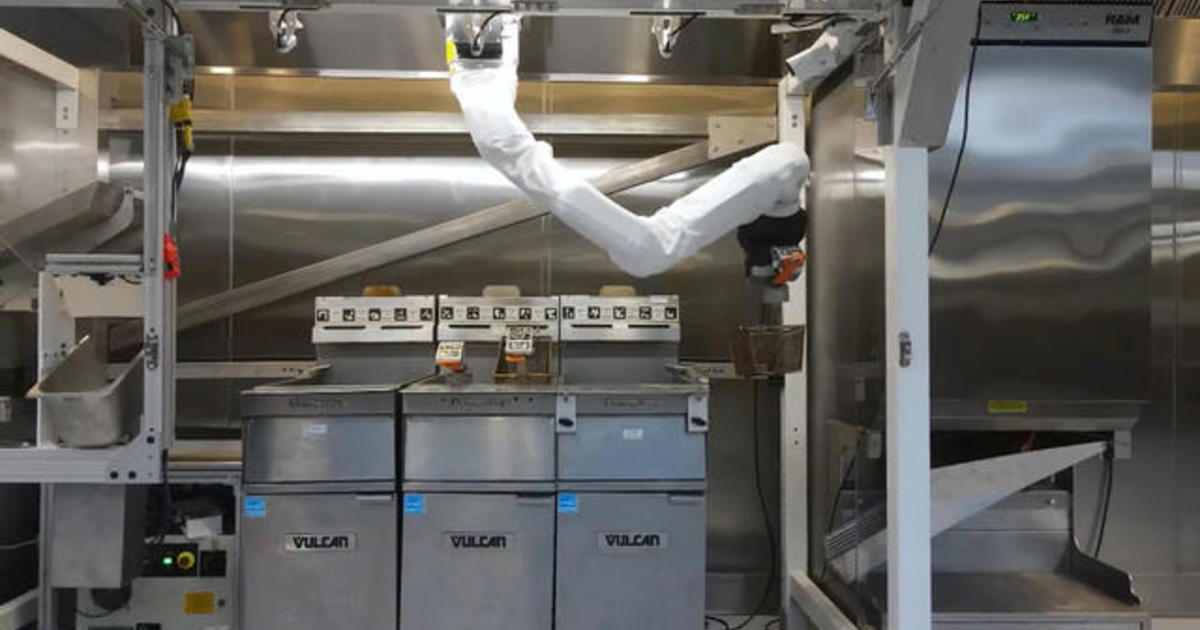It’s long since been the vision of Hollywood that robots and humans would be side-by-side. In some Hollywood films, this partnership is a recipe for catastrophe, but in this suburb not far from Tinseltown, AI and robots are working in a restaurant kitchen.
The restaurant, called CaliExpress, can be found in the heart of Pasadena, California. It’s the first time that so much technology has been in one place, according to business owner Vic Aulakh.
The burger joint uses a grill robot by Cucina and “Flippy,” a robot from Miso Robotics that can handle frying. Both robots can make quite a lot of food: Flippy can make 250 pounds of French fries an hour, and the grill robot can cook about 100 patties in that time. Neither machine needs a break or a day off.
“We can’t get enough people to come out and work on the fryer and grills,” Aulakh said. “They’re dangerous jobs and this automation helps solve a lot of those issues we’re having.”
Flippy can also be found in chain restaurants like White Castle and Jack in the Box. Rob Anderson, a co-founder of Miso Robotics, said that the company started working on the automaton six years ago.
CBS Saturday Morning
“Flippy is really good at repetitive tasks like operating the fryer in those dangerous environments,” Anderson said. “That way, the people working the restaurant can focus on the human element.”
CaliExpress isn’t just using robot chefs. The ordering system at the restaurant is powered by artificial intelligence and uses facial recognition software run by Pop ID to keep track of food choices and payment. The technology’s creator says that the system is not used for surveillance.
There will be some human employees at CaliExpress, too. The restaurant plans on only hiring two “back of house” employees to put finishing touches on a meal. That’s a fraction of hiring for a non-automated kitchen. In a state where the minimum wage for fast food workers will soon be $20 an hour, having less people to pay can be a bonus for businesses.
“It does reduce some jobs, but there’s so many more jobs created with the technology as well as maintaining this technology,” Aulakh said.
A study published this week by researchers at MIT found that just a small amount of jobs could be done by AI, but in most cases, it doesn’t make economic sense to use AI to do the necessary work.
However, a December 2023 government report listed AI as a threat to financial stability. One study found that 82% of restaurant jobs could be handled by robotics, an important statistic in an industry that often struggles with understaffing.
Both robots are rented, and technicians monitor them 24/7. Those technicians can take over cooking if something goes wrong with the robots during meal times.
“If for any reason Flippy’s not working, they can flip the barrier up and cook manually as they would normally,” Anderson said.
Aulakh said that hopefully, the robots will also affect the taste of the restaurant’s food – for the better.
“Now, each burger is being cooked precisely the same way every time,” Aulakh said.


